Syngonium Podophyllum Batik
Syngonium Podophyllum Batik is a popular houseplant known for its colorful variegated leaves. This tropical vine is native to rainforests in Central and South America and is an easy-to-grow houseplant.

Origin and Features
The Syngonium Podophyllum Batik plant is a cultivar of the species Syngonium podophyllum. This species is known by several common names such as arrowhead plant, goosefoot plant, or nephthytis.
Some key features of the Syngonium Podophyllum Batik cultivar:
- Leaves are mostly light green but variegated with splashes of white/cream color
- Leaves have an arrowhead shape, with 3-7 lobes
- Can grow up to 3-6 feet tall as a climbing vine
- Easy to care for and great for beginner plant owners
The Batik cultivar is native to the tropical rainforests of Central and South American countries like Costa Rica, Ecuador, and Brazil. It thrives in warm, humid environments in the understory of the rainforest.
“Discover a variety of stunning Syngonium species, including the Syngonium Podophyllum Batik, in our Syngonium Types: 5 Stunning Syngonium Varieties guide.”
Growth Requirements
The Syngonium Podophyllum Batik is quite an easy houseplant to care for, which adds to its popularity. Here are its key growth requirements:
Light
These plants grow best in bright, indirect light. Some morning or late afternoon sun is fine, but avoid prolonged direct sunlight which can scorch the leaves. An east, west, or slightly shaded south-facing window is ideal.
Water
Water thoroughly once the top inch or so of soil is dry. Take care not to overwater, as sitting in soggy soil can cause root rot. Allow excess water to drain fully from the pot’s drainage holes before returning to a saucer.
Temperature & Humidity
Daytime temperatures of 65-80°F suit it best. Cooler night temperatures around 60°F are fine. Average home humidity levels are adequate, but higher humidity is beneficial. Group plants together, use a humidifier, or place pots on a pebble tray to boost moisture.
Soil
A fast-draining, all-purpose potting mix works well. Adding some peat moss or compost will help retain moisture.
Fertilizer
Apply a balanced liquid houseplant fertilizer at half strength once a month in the spring and summer. Dilute slow-release pellets as an alternative.
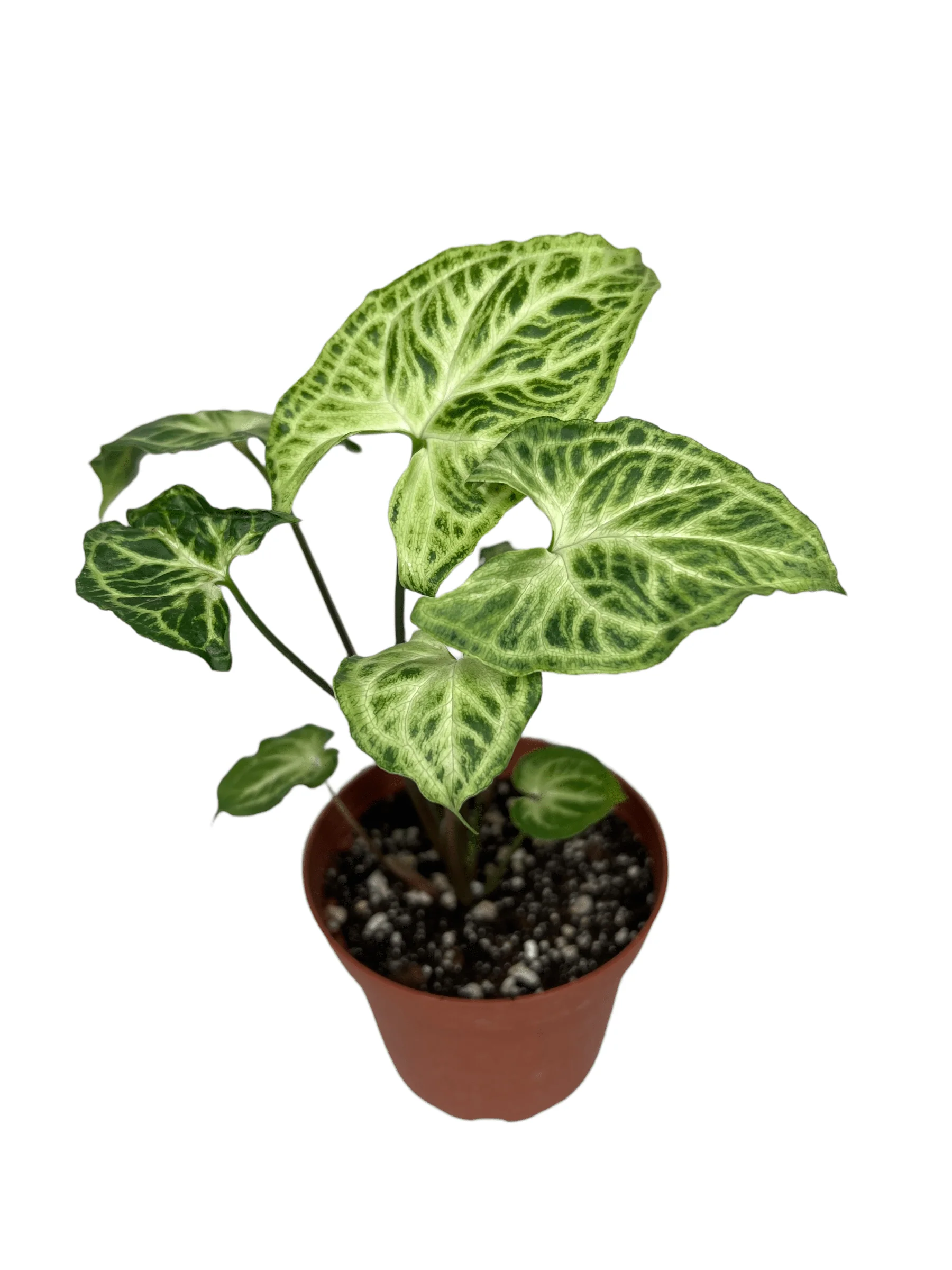
“Discover the exquisite beauty of the Syngonium Podophyllum Batik! Click now to bring this stunning, easy-to-care-for plant into your home. Don’t miss out on adding a touch of nature’s elegance to your space. Shop now!”
Where to buy Syngonium Podophyllum Batik? Benefits from importing plants from Thailand
- Shipping: Door to door shipping, fast and safe with Dragon Courier
- Biodiversity: Thailand is known for its rich biodiversity, including a wide variety of aroid species. This diversity allows importers to access a broad range of unique and exotic aroid plants.
- Quality and Health of Plants: The suitable climate helps the plants grown here stay healthy and of high quality.
- Cost-Effectiveness: Due to favorable growing conditions and efficient production methods, Thai aroid plants can often be more cost-effective compared to those from other countries.
- Access to Hybrid Varieties: Thai growers are often involved in the development of new hybrid aroid varieties, offering unique plants that may not be available from other sources.
Syngonium species are the most sought after by aroid plant lovers
Propagation
The Syngonium Podophyllum Batik propagates easily from stem cuttings in both soil and water. Taking cuttings from a mature, healthy parent plant has the best success rate.
Soil Propagation
- Take a stem cutting with 3-4 leaves. Cut just below a node.
- Strip off lower leaves and place directly into well-draining soil. Water gently.
- Enclose in a plastic bag or cloche to boost humidity for 4-6 weeks.
- New roots and growth will emerge in several weeks. Pot up the new plant.
Water Propagation
- Take a similar stem cutting. Remove lower leaves.
- Place in a small jar/vase of clean water, replacing weekly. Use rooting hormone to hasten growth.
- Once several inches of roots form in 3-6 weeks, pot up in soil mix.
Both methods work well. Keep new cuttings warm and humid while rooting. Mist leaves often and avoid direct sun.
Common Concerns
Overall, Syngonium Podophyllum Batik remains pest and disease resistant if given proper care. Issues to watch for include:
Drooping Leaves
Drooping, yellowing leaves often indicate over or under-watering. Check that soil moisture and drainage are correct.
Root Rot
Soggy soil leads to fungal root rot. Allow soil to dry adequately between waterings. Apply a fungicide drench if rot is severe. Repot with fresh mix.
“For more insights on caring for your Syngonium and preventing common issues, check out our extensive Syngonium Care article.”
Pests
Watch for common houseplant insects like mealybugs, spider mites, or aphids. Wipe leaves down with neem oil or insecticidal soap sprays. Remove severely infested leaves.
With the right care, most plants remain vigorous and trouble-free for many years. Proper sunlight, moisture, humidity, and using clean tools when propagating are vital.
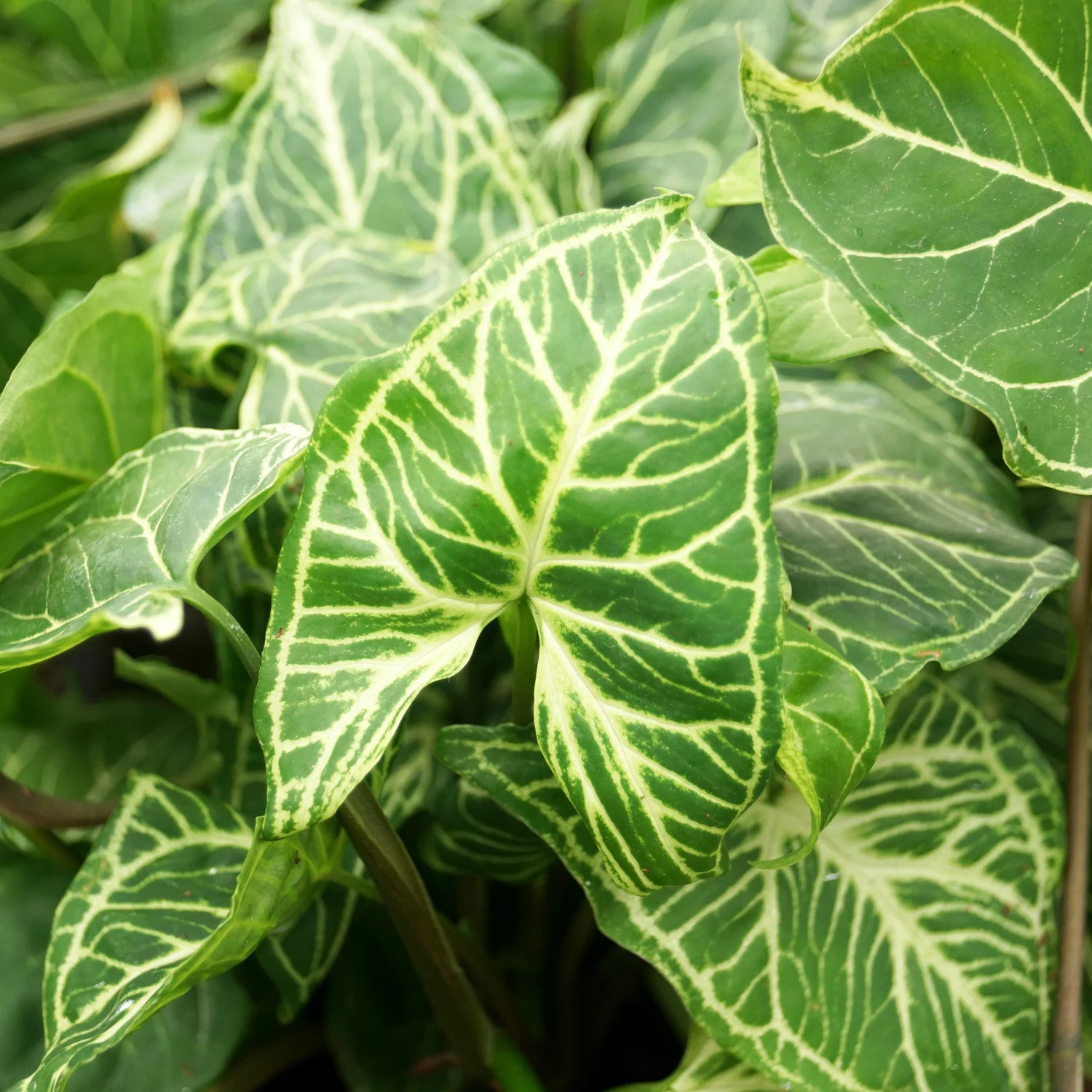
Conclusion
With its colorful variegated foliage, the Syngonium Podophyllum Batik makes a fabulous addition indoors. As a vining plant, it looks wonderful grown up a moss pole, or trailing from high shelves. This tropical rainforest native thrives as a houseplant given bright, indirect light watered once the top layer of soil dries out. Misting the leaves, providing indoor humidification, and monthly feeding keeps plants lush. Taking stem cuttings propagates new baby Arrowhead Vine plants easily. Watch for pests, overwatering, and direct sun exposure as main issues to avoid. With the proper care, the Batik cultivar remains a resilient, unique houseplant sure to be a standout in any indoor collection.
FAQ
- What is Syngonium Podophyllum Batik? Syngonium Podophyllum Batik is a distinctive variety of the arrowhead plant, known for its unique, patterned foliage. It features leaves with intricate, batik-like variegation, making it a popular choice for indoor plant enthusiasts.
- How do I care for my Syngonium Podophyllum Batik? This plant thrives in medium to bright indirect light. Water it when the top inch of soil feels dry, and maintain high humidity if possible. Avoid overwatering and ensure good drainage. It prefers temperatures between 60-80°F (15-27°C).
- Is Syngonium Podophyllum Batik toxic to pets? Yes, like other Syngonium varieties, the Batik is toxic to pets. It contains calcium oxalate crystals that can cause irritation and swelling of the mouth, throat, and digestive tract if ingested by animals.
- Can Syngonium Podophyllum Batik be propagated easily? Yes, it can be propagated through stem cuttings. Place a cutting with at least one node in water or moist soil. Roots usually develop within a few weeks, after which the cutting can be planted in soil.
- Why are the leaves of my Syngonium Podophyllum Batik turning yellow? Yellowing leaves can be a sign of overwatering or poor drainage. Ensure the plant is not sitting in water and the pot has adequate drainage. Also, consider if the plant is receiving too much direct sunlight or if there’s a need for fertilization.

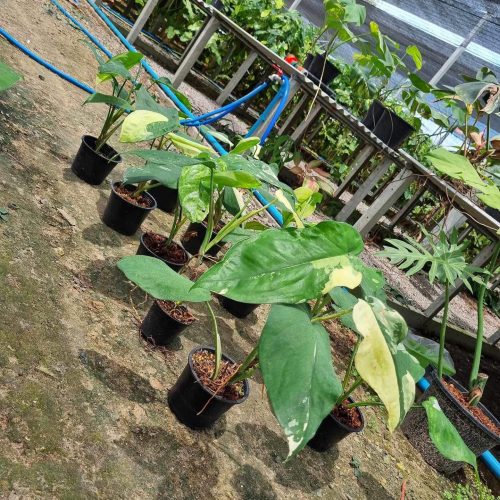

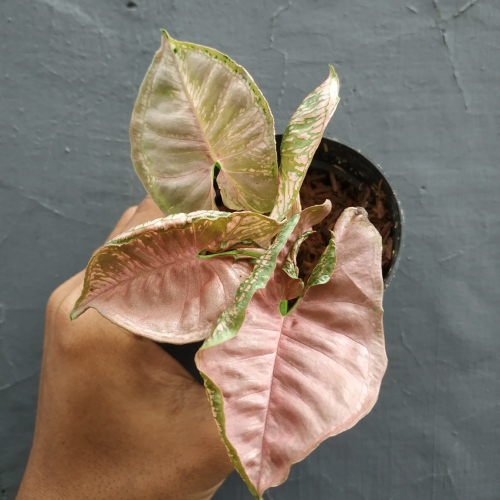
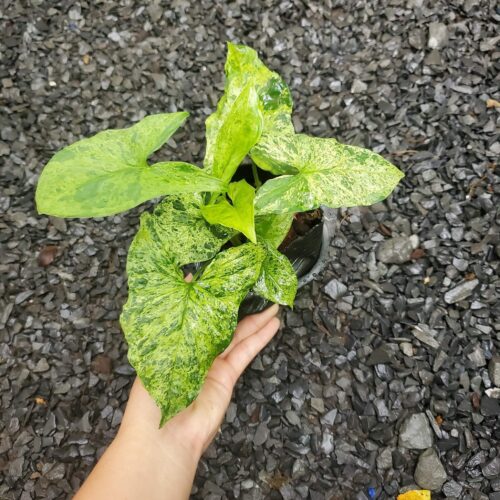
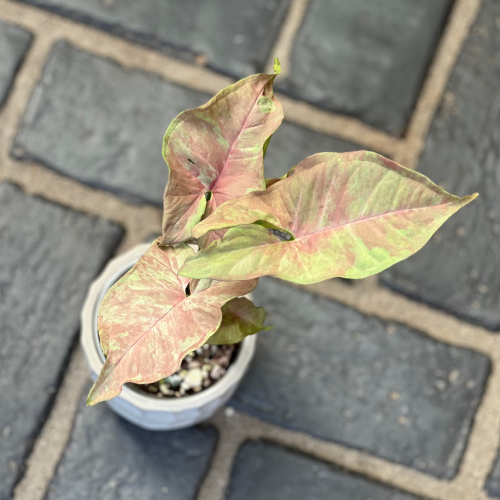

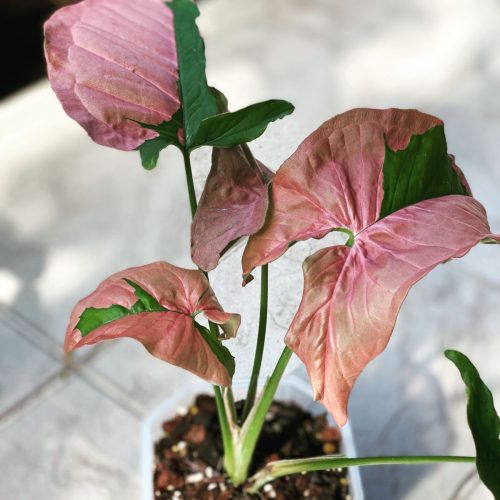

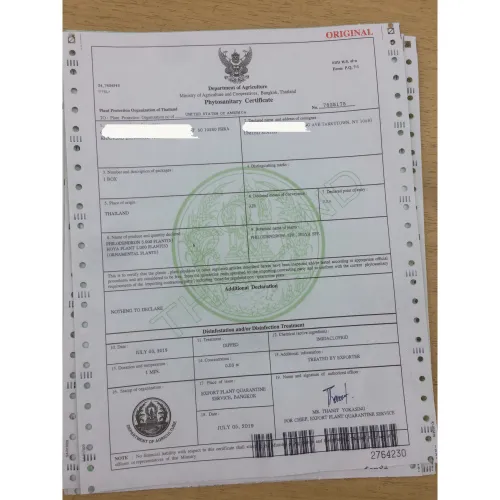
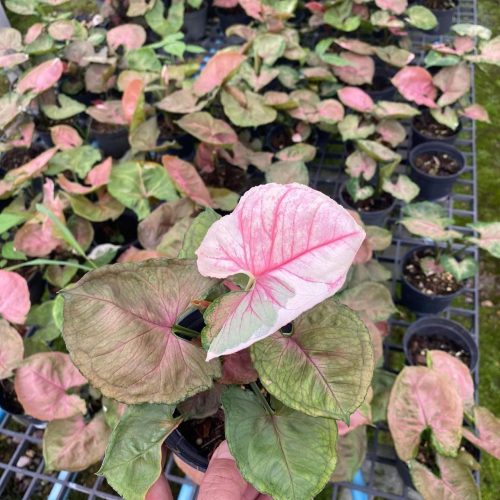
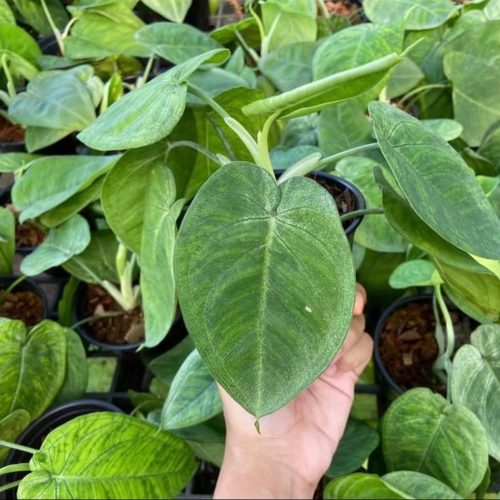
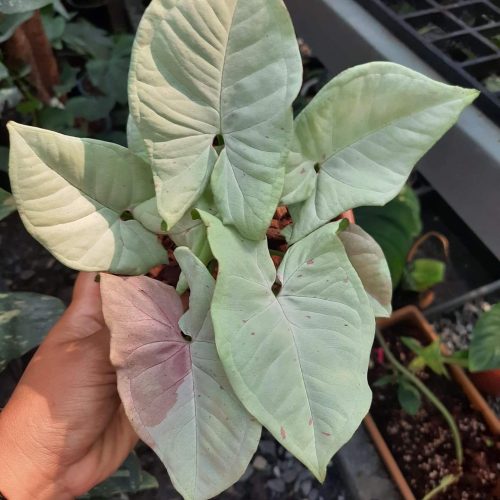

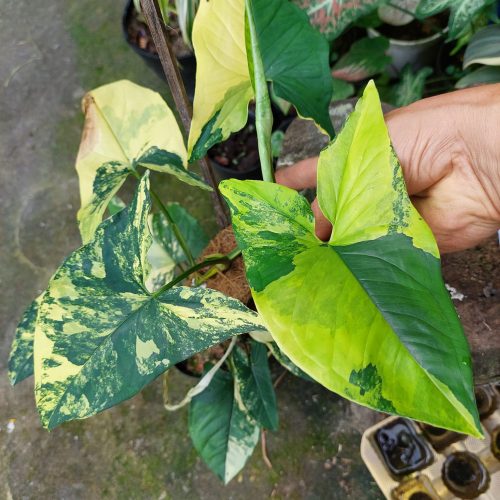



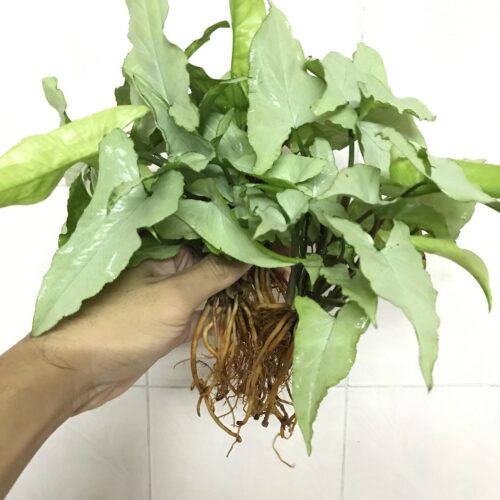
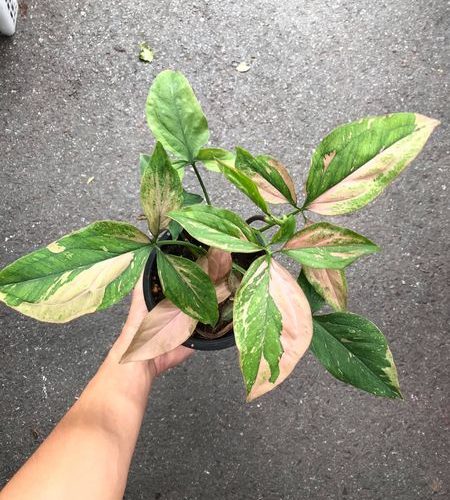

1 thought on “Syngonium Podophyllum Batik: An Exquisite Indoor Plant”